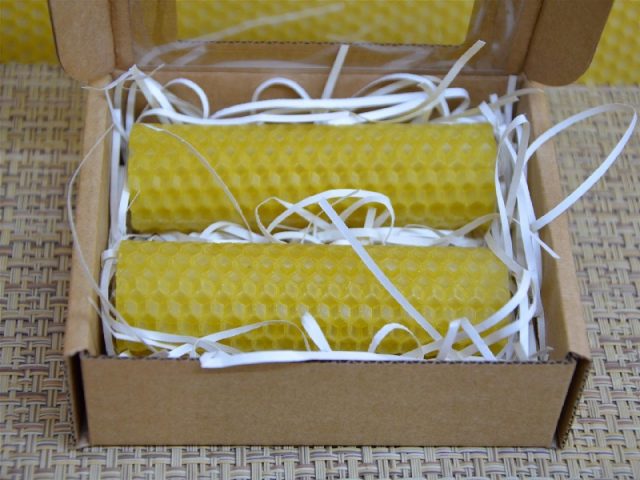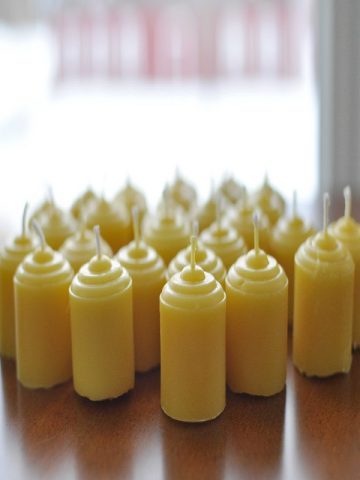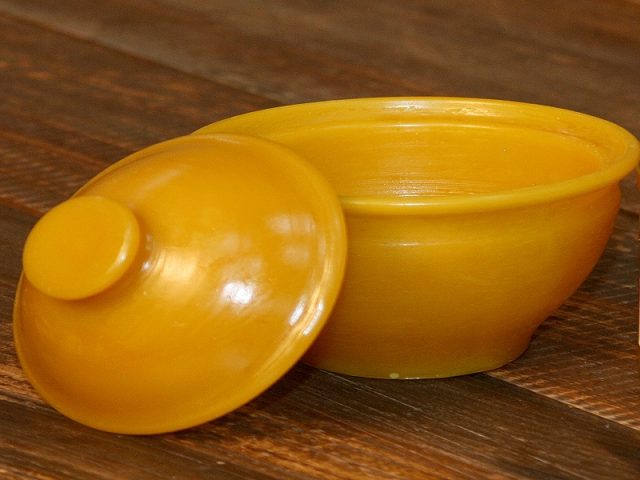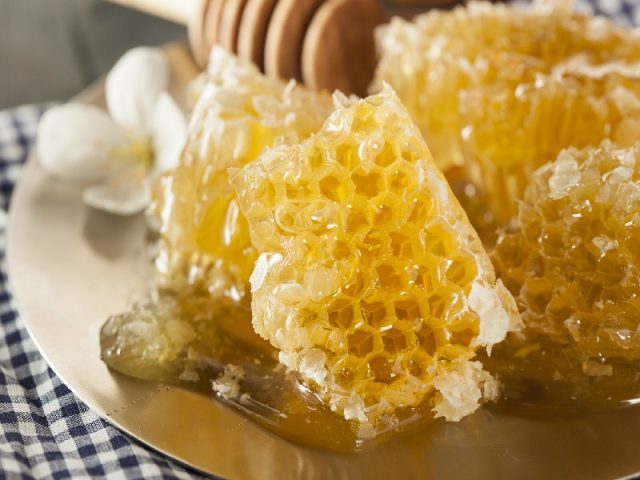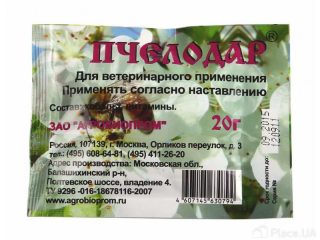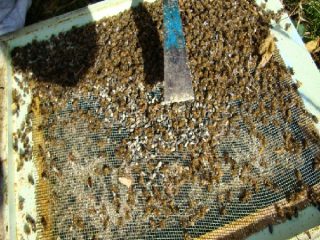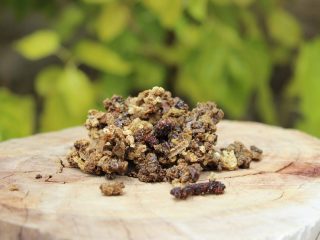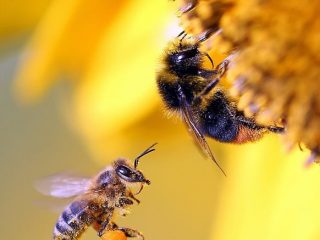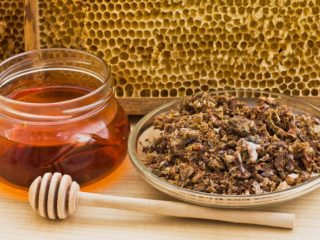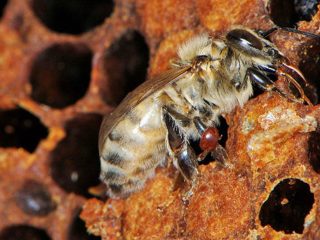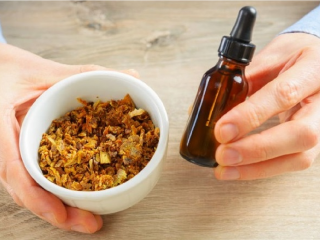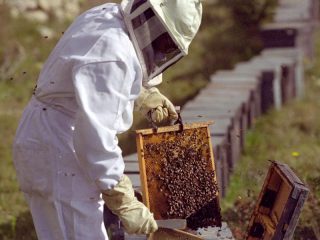Content
The use of beeswax in alternative medicine and cosmetology is gaining popularity. What insects use as building material is a storehouse of valuable nutrients for humans. All waste products of bees are appreciated by humans. Apitherapy has found its worthy niche in the market of medicinal drugs and services.
What is beeswax
Bee building material is a complex organic substance with its own characteristic odor, color, and consistency. As a result of some vital processes, insects produce not only honey, pollen, “bee bread”, propolis, but also a composition from which honeycombs are subsequently built for collecting and storing honey.
What does beeswax look like?
Visually you can see that the substance is strong, and when pressed you feel hardness. However, beeswax is quite fragile and can be from white to all shades of yellow. Also, the greenish tone of the substance is not considered a defect, as this is explained by an excess of propolis.
The color range of the product may vary depending on the time of year. In summer it varies from light yellow to brown, in spring cream shades predominate. It is worth noting that the colors of the substance differ depending on the location of the apiary and the diet of insects. If the substance melts under the influence of ultraviolet light, the product will look lighter every day.
If we analyze the chemical and thermal properties of the substance, it should be noted that wax does not dissolve in water and glycerin. Warmed medical alcohol and essential oils, turpentine, paraffin compounds and other fatty substances are well suited for dissolving the product.
How is beeswax formed?
Wax production is a complex process. The life span of an insect is a month. Young individuals (up to 20 days) produce and secrete the product through the abdominal glands. The substance is white flakes, no more than 0.2 mg in size. The material is ready for construction and bees use it everywhere (honeycombs, nurseries, storage facilities). The beginning of the labor journey begins on the 11th day of life. The young animals are actively saturated with nectar and pollen and accumulate enzyme reserves in the body. Then the process moves into the last stage - the release of a valuable product through the glands.
During the season, a beekeeper can get up to two kg of wax from a hive, which has antibacterial properties.The production of honeycombs is quite justified, since honey in them is not subject to fermentation and the growth of mold fungi. Autumn honeycombs are valuable to a beekeeper. The cells in them can be dark and even black. This is explained by the accumulation of residual substances and beekeeping products.
How beekeepers extract wax
Beekeepers use the fruits of the insects' labors, but to prevent the bees from suffering, they use cuttings, damaged honeycombs, empty cells, and barring for processing. Several methods are used to obtain the substance.
- Sunny wax refiner. This is how “drip wax” is obtained, obtained by the influence of sunlight on all possible waste.
- Steam wax refiner. Melting takes place under the influence of a large amount of steam.
- Water wax refiner. In large volumes of water, the wax is boiled to the required state.
- Solvent extraction.
Beekeepers mainly use steam to extract wax, since the method produces a minimal amount of waste.
Composition of beeswax
The biochemical structure of wax is at the stage of scientific study. So far no one has been able to replicate its structural formula artificially.
Data on the structure are quite contradictory and ambiguous. According to one version, bee product contains from 50 to 300 chemical elements, of which the most important are the following:
- esters – 70%;
- carbohydrate complexes (limit) – up to 17%;
- fatty acids – up to 14%;
- water – up to 2%;
- pigments;
- pollen particles;
- aromatic inclusions;
- propolis.
Beeswax contains a rich composition of vitamins and minerals. After all cleaning procedures, it loses almost all valuable inclusions.
What is beeswax used for?
The uses of beeswax have a wide range. If you go deeper into history, the ancient Greeks made dolls from it, used it to open writing boards, and used it as stoppers to seal containers. Today the use of beekeeping products is wider:
- substance for the manufacture of medicines;
- cosmetic lip balms;
- soap making product;
- impregnation for leather products;
- checking casting molds in ferrous metallurgy;
- production of thick sheets of paper;
- in electrical equipment;
- for the production of varnishes and paints.
Before the advent of electricity, wax was a material for light sources and was especially valued for this.
Benefits of beeswax
In medicine, beeswax is used in different ways:
- solving dermatological problems (restores tissue, degreases, eliminates inflammatory processes, relieves pain, saturates with moisture);
- otolaryngology – used for the treatment of bronchitis, runny nose, tracheitis, otitis;
- in gynecology it is widely used to eliminate the inflammatory process and treat pathologies in the reproductive organs;
- Dentistry through wax cleans the mouth of bacterial flora, smoothes out inflammatory processes, sensitivity of the gums, the product is effective for periodontitis, stomatitis, and periodontal disease.
The bee product has a powerful bacteriological effect. It is used to treat inflammation, burns, and ulcerative lesions. For pathologies of the throat and oral cavity, it is recommended to chew the substance.The product itself is endowed with the properties to relieve signs of poisoning, remove toxins, work more effectively than activated carbon; after chewing, the remains should be swallowed. This is how intestinal functions are normalized, peristalsis is restored, and the microflora balance is adjusted. Wax is an excellent remedy for dysbacteriosis.
Where to get beeswax
The bee component is sold in specialized stores, but before purchasing it is important to explain the purpose of the purchase. Cleaned plates are not intended for medicinal purposes, since during manipulation they have lost their beneficial components. Foundation made from pure wax is valuable for beekeepers. They put it on frames and make preparations for the upcoming honey harvest.
You can also buy yellow pieces on the market, but you should take the choice seriously. To avoid becoming the owner of a counterfeit, pay attention to the following details:
- natural product, homogeneous, has no additional inclusions;
- the color range can be white, light yellow, intense yellow, grayish, with a greenish tint;
- the aroma should be like honey, with a slight hint of propolis and herbs;
- organoleptically, the piece is easy to chew and does not stick to the teeth;
- the ingot usually resembles a circle of cheese, deepened towards the center;
- the place where the bee component splits is matte with a grainy texture;
- if you crush it in your hands, under the influence of body temperature the wax softens and becomes plastic;
- does not leave greasy marks;
- when immersed in alcohol, it drowns.
Knowing the above listed features of the bee product, you can avoid disappointment from unsuccessful purchases.
How to use beeswax in healing
Beeswax is good for strengthening the body's barrier functions - it is an excellent means of preventing diseases. But if it was not possible to avoid diseases, the substance is effective in treatment or can significantly alleviate symptoms.
Treatment of joints with beeswax
It's not often you meet a person who doesn't have joint pain from time to time. Beeswax can be used to prepare homemade recipes that relieve symptoms:
- Rheumatism. For preparation you will need: melted wax (50 g), which is combined with lanolin (120 g). The resulting ointment is applied to plantain or burdock leaf and a bandage is made. It is recommended to wrap the top with a warm cloth. The manipulation is performed for two weeks.
- Arthritis. According to the recipe, take: bee component (40 g), pine resin (20 g), pork fat (200 g), butter (40 g). All ingredients are mixed and simmered over moderate heat until smooth.
The healing properties of beeswax eliminate aching bones and joint pain. People who are sensitive to changes in the weather may find relief from these symptoms.
Using natural beeswax for calluses and corns
When mixed with other components, beeswax forms medicinal ointments. Corns and calluses can significantly impair the quality of life.
To prepare, take wax, butter, cucumber or zucchini juice. The wax is melted, softened butter and vegetable juice are added. The resulting paste is applied to the roughened area and a cotton sock is put on. It is most effective to apply the product at night.
For preparation you will need: wax (15 g), propolis (50 g), juice from half a lemon. Roll the mixture of substances into balls and press lightly. The cake is applied to the affected area. Fix with adhesive tape.In this state it should be fixed for several days. After a certain period of time, the limb is steamed in a solution of 2% soda. Calluses and corns disappear after one or two manipulations with the substance.
Wax treatment for sinusitis
Sinusitis is a serious disease that wax can treat.
For treatment, the bee product is heated to a plastic state, and cakes are made from it. The resulting substance is applied to the nose, covered with a warm cloth (soaked for half an hour). The course of therapy is long. A total of 15 manipulations should be performed with repetitions every two days.
Treatment of skin pathologies with beeswax
For the treatment of dermatological problems (boils, burns, wounds), a special ointment with bee product is prepared, which is applied with light movements. To prepare you will need:
- vegetable fat (animal fat is allowed) – 50 g;
- bee product – 15 g;
- half a boiled yolk;
- essential oil (nutmeg, eucalyptus) and turpentine - 15 drops each;
- tea tree essential oil – 3 drops.
Algorithm of actions: mix all components, excluding the yolk. Simmer without reaching 70 degrees for about 40 minutes, a quarter of an hour before the end of cooking, add crushed yolk. The mixture is passed through thick gauze. The range of uses of the ointment is wide and is not limited to dermatological problems. The composition should be stored in the cold (+5 degrees).
For diseases of the ENT organs
For asthma and sinusitis, hay fever, it is recommended to chew zabrus (wax with honey) for treatment.The procedure is performed hourly for 15 minutes. This chewing gum strengthens the immune system and promotes faster recovery.
For respiratory diseases
For pneumonia, chronic bronchitis, and colds, rubbing with an ointment based on a bee product helps a lot.
The ingredients included in the ointment can be replaced with more familiar ones. The main substance remains the bee product - wax.
How to use honey with wax internally
Honey that has not been completely pumped out of the honeycomb or caps cut from the foundation and mixed with honey is called zabrus. It is worth noting that this is a real delicacy that brings great benefits.
In order to strengthen the body's protective functions, to prevent many common diseases, it is recommended for adults to consume 1 tablespoon of honey wax three times a day. The process of chewing the product should take a quarter of an hour.
The same principle is used to strengthen the immune system of children. They are given bee bark to chew in a dosage of 1 teaspoon three times a day.
The use of wax in cosmetology
The benefits of beeswax are appreciated in cosmetology for the production of glosses, lipsticks, hand creams, and hair care products. Homemade recipes can be actively used to restore freshness and elasticity to the skin, but the component is actively used on an industrial scale and sold from the shelves of household chemical stores.
Since recently people have begun to focus more on natural ingredients, the bee component has become more in demand.
What can be made from beeswax
Natural beeswax is a universal bee product. This is a source of youth and protection for the skin of the face and hands. For medical purposes, it is used to eliminate inflammatory processes, suppress bacterial flora, and achieve a regenerative effect. The bee product has also found its application in everyday life:
- The technique of coloring fabrics is batik. The bee substance is distributed with a brush onto fragments of fabric, which they want to protect from the influence of dyes.
- If after dacha work the equipment is covered with a liquid product, it can be kept in exceptional condition without signs of rust until spring.
- Applying wax to the fabric of a demi-season jacket and drying it with a hair dryer makes the item waterproof and warmer.
- To prevent wood from cracking, woodworkers know a secret - the nail should first be dipped in warm yellow bee product.
- The substance is included in industrial furniture polishes.
- For those who love unusual decor, you can add romance and love by making a beeswax seal to seal your card.
- Shoes can be treated with bee substance, maintaining a presentable appearance for a long time and making them waterproof.
- Plain paper coated with a natural composition can be used for kitchen needs.
- With a little imagination, you can make unusual candles that exude a pleasant aroma of beeswax.
The substance does not leave greasy stains, it can be safely used for any purpose and not limited to apitherapy.
Contraindications
Usually, even traditional methods of therapy, natural herbs and components have a whole list of contraindications. Wax is a rare exception. It cannot be used only in two cases:
- Individual immunity to beeswax.
- Allergic manifestations.
Terms and conditions of storage
The easiest of all bee waste products to store is wax. Individual conditions are not created for him. The only thing that matters is air humidity. Wherever it lies, the concentration of the smell does not decrease, the color and beneficial properties are fully preserved.
Features of bee substance storage:
- do not place in places with high humidity;
- do not place the substance near intensely smelling products;
- It is recommended to store in food paper or paper bags;
- If the requirements are met, the substance is stored without losing valuable qualities for up to 5 years.
Using the recommendations and following simple rules, you can use beeswax at home for a long time and fruitfully.
Conclusion
Using beeswax within reason can eliminate the need to visit the pharmacy forever. Bee colonies spend their short lives in constant labor. Everything they produce and extract has a powerful positive effect on the human body. The centuries-old traditions of our ancestors have taught us to value all the fruits of insect life.Beeswax is used in folk medicine; its benefits are also appreciated by doctors and adherents of conservative treatment methods.
